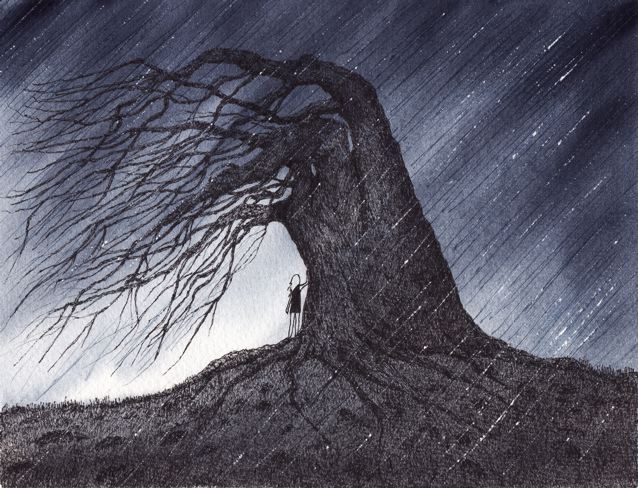 Overcast with a fog-like damp chill here early Sunday on California’s north coast — and a little-bit of a breeze, too.
Overcast with a fog-like damp chill here early Sunday on California’s north coast — and a little-bit of a breeze, too.
A logical lede to a surprise story I spied only this morning about climate, and, wind.
Our only home is the earth — an awesome, interconnected organism, arranged on many levels — and rising warmth will disturb a shitload of variables.
One overlooked or forgotten, is heat on the movement of air.
(Illustration found here).
Last week, buried within a week of environment-related news, a piece at Conservation Magazine on a study of our planet’s wind system, and research from Brandon Barton, a Univiersity of Wisconsin–Madison postdoctoral researcher in the Department of Zoology.
A few points:
Temperature and precipitation get all the glory in the discussions surrounding climate change.
Ocean acidification has earned itself a seat at the table as well.
But nobody has really paid any attention to wind.
Maybe that’s because you can’t actually see wind, or that the changes have been more subtle than the triple-digit (Fahrenheit) heat that’s stretching later and later into the autumn.
…
Wind is created thanks to differences in temperature.
And since the poles are warming faster than the equator, there is a smaller global temperature differential, reducing the speed of wind.
In his paper, online this month in the journal Ecology, Barton points out that global wind speeds have decreased by some 5 to 15 percent over the last three decades, and are expected to decrease another 15 perfect in the coming century.
You’ve heard of global warming? Get ready for “global stilling.”
But it’s not just the warming climate that’s slowing wind – it’s also human architecture.
Physical, manmade structures are blocking the flow of wind, at least on a local scale.
So are trees.
“In North America, we’ve been replanting trees that were lost in the 1800s, after settlers showed up and just leveled places like New England,” Barton said in a statement.
Ecologists have long investigated the affects of wind on seed dispersal and pollination, or on the ways that winds modify ocean currents.
But the affects of wind on predator-prey dynamics have been largely ignored.
Barton set out to change all that by looking at the way that wind altered the dynamics between ladybugs (in particular, the multicolored Asian lady beetle Harmonia axyridis), and their prey, the soybean aphids Aphis glycines, pests who can ravage soy plants.
…
The study not only sheds important light on how our changing climate will affect ecosystems in ways we haven’t yet even begun to consider; it also reveals a useful method for farmers who wish to control aphids.
They might consider erecting wind barriers near their soy fields, or – for a more ecologically friendly approach – planting tall trees at the edges of their fields, which could not only buffer the wind, but provide an additional refuge for other wildlife.
And another reason climate change is so way-frightening — there’s so many sides to the same coin. We humans think we’re so smart, but yet we really know nothing.
My most-favorite poet, Emily Dickinson, “Nature, Poem 30: The Wind’s Visit” — the feel of the untouchable:
The wind tapped like a tired man,
And like a host, “Come in,”
I boldly answered; entered then
My residence withinA rapid, footless guest,
To offer whom a chair
Were as impossible as hand
A sofa to the air.No bone had he to bind him,
His speech was like the push
Of numerous humming-birds at once
From a superior bush.His countenance a billow,
His fingers, if he pass,
Let go a music, as of tunes
Blown tremulous in glass.He visited, still flitting;
Then, like a timid man,
Again he tapped — ‘t was flurriedly —
And I became alone.
A ‘tired man,’ overheated, and slow.